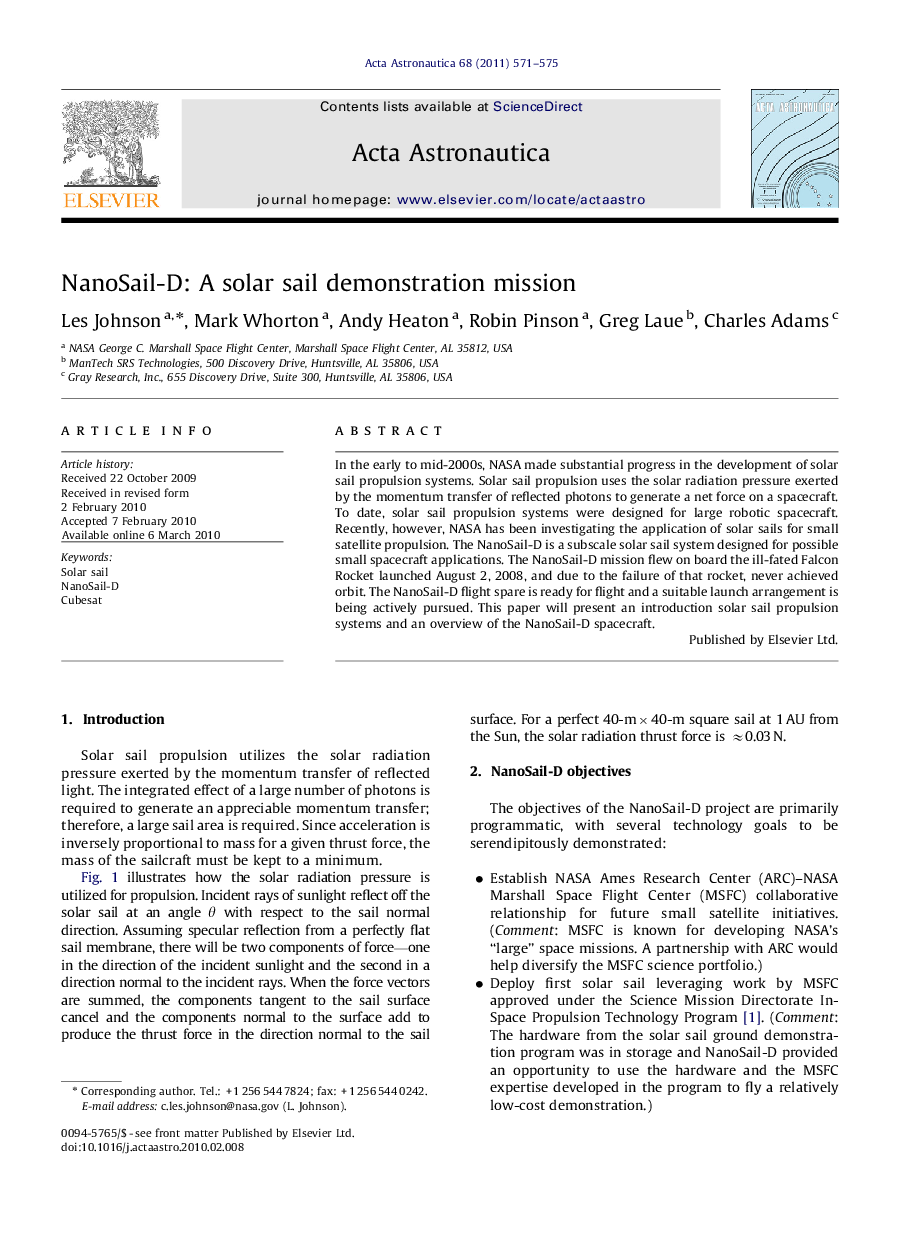| Article ID | Journal | Published Year | Pages | File Type |
|---|---|---|---|---|
| 1715611 | Acta Astronautica | 2011 | 5 Pages |
In the early to mid-2000s, NASA made substantial progress in the development of solar sail propulsion systems. Solar sail propulsion uses the solar radiation pressure exerted by the momentum transfer of reflected photons to generate a net force on a spacecraft. To date, solar sail propulsion systems were designed for large robotic spacecraft. Recently, however, NASA has been investigating the application of solar sails for small satellite propulsion. The NanoSail-D is a subscale solar sail system designed for possible small spacecraft applications. The NanoSail-D mission flew on board the ill-fated Falcon Rocket launched August 2, 2008, and due to the failure of that rocket, never achieved orbit. The NanoSail-D flight spare is ready for flight and a suitable launch arrangement is being actively pursued. This paper will present an introduction solar sail propulsion systems and an overview of the NanoSail-D spacecraft.
